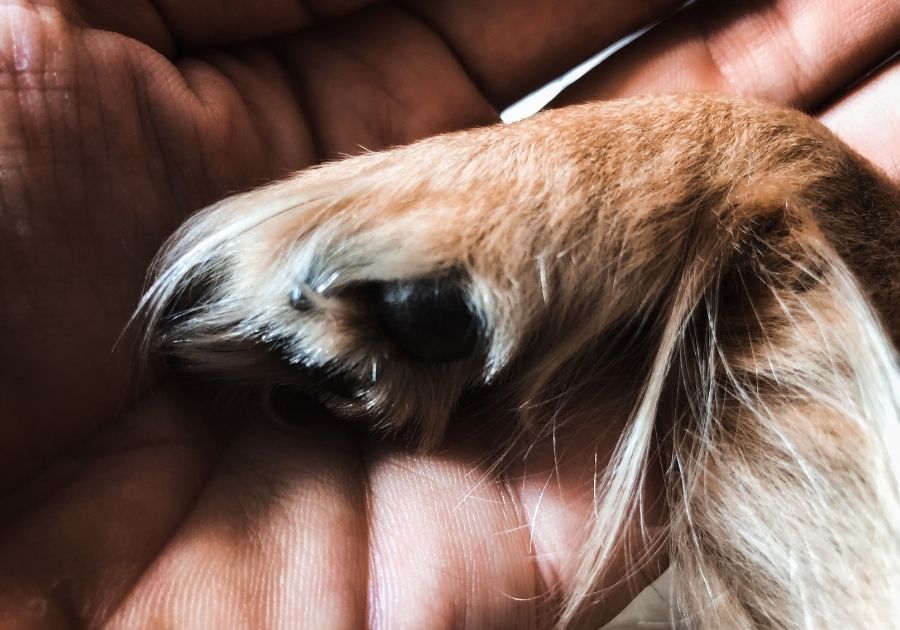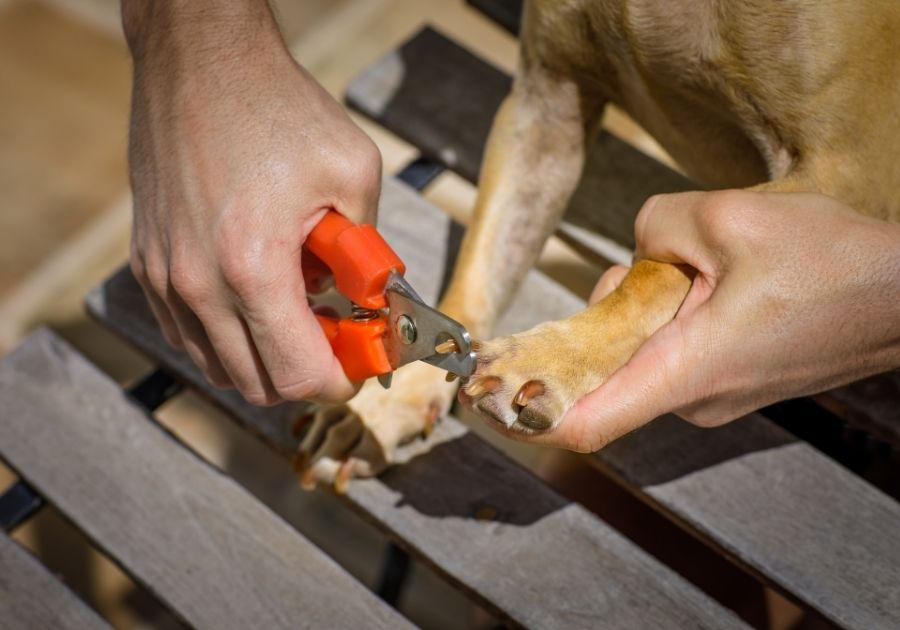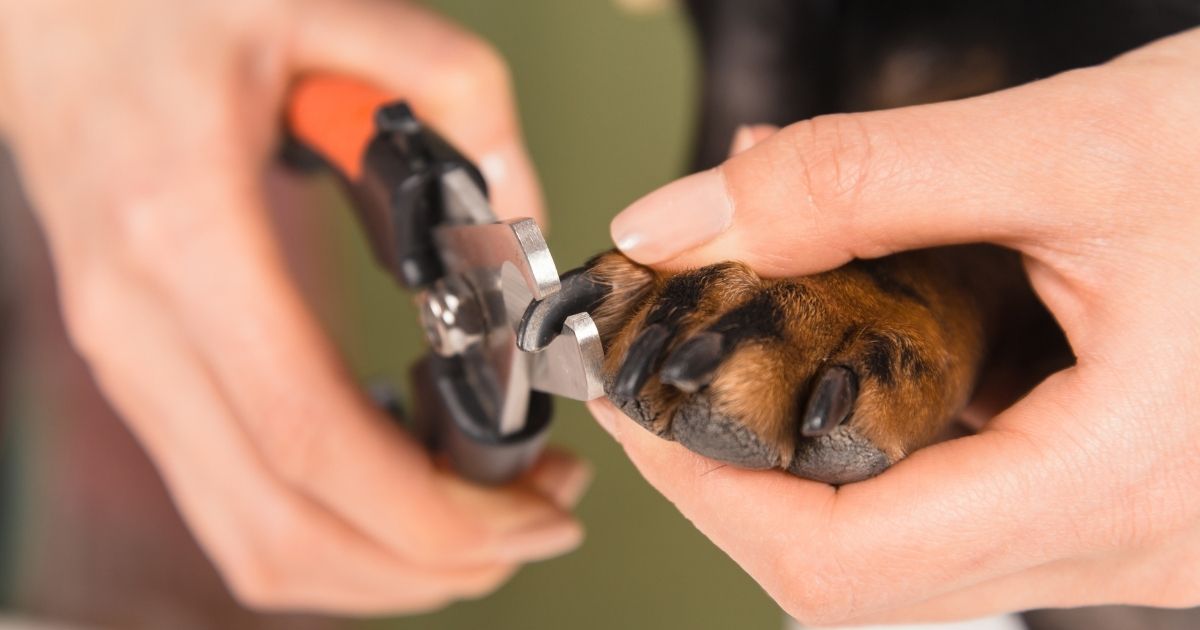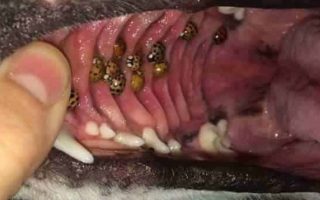If your canine pal totally abhors the thought of getting groomed, then you might anticipate the task of cutting its nails with all the dread in the world.
It’s a universal problem: nervous, restless, don’t exactly take kindly to clippers or anything that looks like one?
You start off by taking hold of your dog’s paws ever so gently but with a firm grip.
After which you should place your clippers at a 45-degree angle away from your dog’s nails and then start cutting in very tiny bits.
When a small grayish dot appears in the nail, it’s a sign that you should stop the cutting.
Read ahead to find out how to cut an uncooperative dog’s nails without causing them any harm.
This article aims to let you in on some pro tips and tricks that will come in handy when handling your dog.
Hop in!
Do I Really Need to Trim My Dog’s Nails?
Trimming your furry friend’s nails is a crucial grooming task that will also help it to stay healthy and happy.
When you fail to trim your dog’s nails, they might grow too long and can cause a number of issues for you and your dog.
Dogs that play around on hard surfaces such as blacktop and concrete usually have the ability to wear down their nails.
However, the majority of dogs spend a large amount of their time indoors or playing around on grassy surfaces.
This implies that the tips of their nails aren’t worn down often enough, which can result in overly elongated nails.
Nails that are excessively long are at risk of getting torn off, e.g., if your dog’s nails happen to get trapped on a piece of furniture or carpeting.
This can result in a serious injury that might require veterinary attention and additional expenses.
Also, longer dog nails make it more difficult for dogs to walk around in comfort.
What Happens When My Dog’s Nails Remains Untrimmed?
Untrimmed nails can lead to health problems and will cause mobility discomforts for your dog.
When your canine companion constantly hits its nails on the floor while it walks, it puts a lot of pressure on the nail bed and causes discomfort.
This discomfort is further intensified by the pressure of your pooch’s uneven weight distribution, as it continues to distribute its weight differently while walking.
Consequently, this would adversely impact the alignment of your canine’s paw joints and toes, as well as other connected nerve endings.
You should aim to give your dog’s nails a trim when they are long enough to touch the floor.
You can determine this by visually checking your dog’s nails, or by listening for the sound of nail tips touching the floor loudly as it walks.
What to do if My Dog Won’t Let Me Cut its Nails
There’s an array of reasons as to why dogs won’t let you trim their nails.
- They are scared of being touched or restrained.
- Previous experiences of getting a nail trim might have been painful.
- They’ve never been trained about nail trimming.
- Being restrained wrongfully.
- Don’t like having their feet touched, or
- Seeing scary nail-trimming tools, etc.
Now that we are aware of some of the possible reasons why dogs hate nail trims, let’s figure out how to overcome them.
This guide is especially useful if your dog is currently giving you a hard time with it.
Step #1: Get Your Dog Familiarized with Nail Clippers
Keep in mind that this mechanical tool is likely new to your dog and may have something to do with past trauma.
Whatever the case, fido has to overcome its fear of clippers.
Call on your dog and pick up the nail clipper while it watches you. When you have picked it up, act happy, smile, and offer your pooch a treat.
Try this step repeatedly several times a day for a few weeks.
Your dog will most likely learn to associate the sight of nail clippers with treats and praise.
When you sense that your pooch is excited to see the nail clippers carry on with step #2.
Step #2: Train Your Dog to be Comfortable with Paw Holding

When your canine friend is in a relaxed state, touch its shoulder lightly and move gently towards the paw.
Keep it calm by using a soothing voice while rubbing softly on its paws.
Next, concentrate on the toes, giving each one a mild squeeze. Then calmly apply pressure to the nail you wish to cut.
If your dog becomes terrified or pulls its claw away, stop for a little while and continue only after it has settled down.
Treats can function as supplements for verbal rewards but are in no way a substitute for them.
Withhold both when the dog withdraws its paw, but do not reprimand it. Carry out this process multiple times a day.
Step #3: Back to the clippers now
Get your dog accustomed to the sound of the nail clippers.
you can do this by repeating the first step with this addition—open and close the nail clippers while talking to your dog and offer it a treat.
Slowly close up the space between the dog and the nail clippers without letting the device touch the dog.
Step #4: Join paw handling and the nail clippers together
Your aim here should be to prepare your canine for the clipper’s touch.
Ensure that your dog is in a relaxed state, after which you should sit on the floor with it.
Using one hand, take hold of Fido’s paw while opening and closing the clippers with the other hand.
Then place them gently on the floor. Gradually repeat the process moving the nail clippers closer to your dog each time.
If your dog maintains a relaxed countenance in close proximity to the nail clipper, slowly place the clippers on one toe while speaking in a soothing tone, alongside a treat, if need be.
If your dog stays calm, touch on each toe with the nail clipper.
But if is panicky or pulls back its foot, stop immediately and then try again more gently.
How to Cut an Uncooperative Dog’s Nails in 4 Easy Steps
Trimming your dog’s nails is a process that should be handled with utmost care.
If you cross the line, you might end up hurting your dog, thereby causing it to associate the nail-trimming experience with pain and dread.
So, your next attempt to do it will present you with a scared, uncooperative dog.
It’s your job as a pet parent to turn your regular nail trims into a beautiful experience.
You should do this with care, patience and reward and watch your dog go from being uncooperative to completely obliging.
Step #1: Get Your Dog Prepared
It’s important to familiarize your dog with the nail trimming process before you begin.
You can get off to a good start by holding your dog’s paws and lifting them.
Begin with short periods like 3 to 10 seconds and gently work your way up to 15 to 30 seconds.
If the dog stays relaxed while you hold on to its toes, treat it to a delightful reward or shower it with praise.
Step #2: Go with Your Dog on Swimming Breaks
In regards to physical health, swimming can be very rewarding for your dog.
It also has a lot of mental benefits for your pet’s mental health. It is an excellent stress-reliever.
If your dog is the perfect size for a swim, you could use the sink or the tub as a makeshift pool.
Guide your dog gently as it paddles.
Taking your dog for a good swim will relax their muscles and reduce their energy levels.
The effect will become evident: less scared, more cooperative.
Step #3: Soften the Nails
When swimming time is over, grab your nail clippers.
Open and close them often enough to ensure that your dog’s ears get used to them. During this process, offer treats to your dog.
When it gets excited by the sound of the nail clipper, try touching it on the nail without really cutting it.
Place your dog gently back into the pool and let it paddle for a while.
Then present the clipper to your dog’s nails a second time while offering treats.
Step #4: Trimming Your Dog’s Nails

As soon as your dog becomes tolerant and cooperative, you should begin trimming its nails.
However, do not forget that you shouldn’t go all the way immediately.
Start off by carefully cutting just one toenail, and then the next.
Take note of your dog’s reaction and act accordingly.
It should go pretty smoothly provided you carefully follow these four steps.
Recommended:
10 Best Smelling Dog Shampoos With Scents That Lasts
Do long nails hurt dogs?
Yes. If your dog’s nails get too long, it can cause pressure and pain on their paws and toes, which will eventually put a strain on their fragile legs.
What angle do you cut a dog’s nails?
Experts recommend trimming your dog’s nails at an angle of 45 degrees.
This will ensure that you stay below the numerous nerves and vessels residing in your dog’s claws.
How short should a dog’s nails be trimmed?
A dog’s nails should be resting right at his paw level. If they are curled over his paw, it’s a sign to give it a nail trim.
Final Thoughts
Trimming your dog’s nails should be a pleasant experience as long as you know how to do it properly.
All you need to do is arm yourself with is loads of care, patience, and understanding because you would be needing a truckload of it.
You May Also Like:
How to Clean Your Dog’s Litter Box Like a Pro
Reference: AKC







